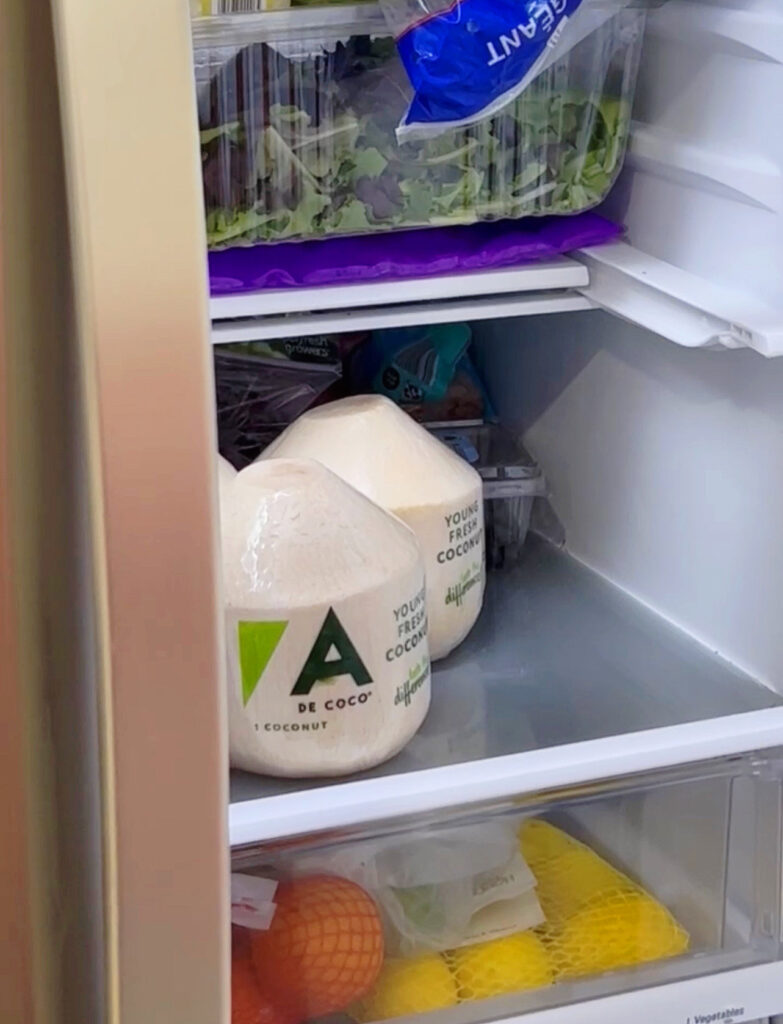If you’ve been hearing the term “young coconut” more and more lately, you may be wondering what exactly it is.
In this article, we’ll explain what a young coconut is and why you may want to give it a try.
We’ll discuss the differences between young coconuts and mature coconuts, what makes them unique, and how they can be used in various ways.
So, let’s get started by first discussing exactly what a young coconut is.
Contents
What is a Young Coconut?
A young coconut is a green, immature coconut that has not yet reached its full maturity.
It can be identified by its hard outer shell and soft, white flesh inside.
Young coconuts are typically smaller in size than mature coconuts, making them easier to peel apart.

Due to their mild flavor and softer texture, young coconuts are often used to make smoothies, milkshakes, and fruit salads.
They can also be enjoyed simply as a snack or added to savory dishes such as curries and stews.
The water inside the coconut is also popularly consumed on its own or mixed into various beverages.
Benefits of Young Coconuts
There are many benefits to consuming young coconuts, let’s take a look at some of them.
1. Soft and easy-to-crave meat
Young coconuts have a soft, creamy texture which makes them perfect for blending into smoothies and other beverages.
This meat is also easier to chip and grate, which allows for more versatility in recipes.
On top of that, the taste is milder than that of a mature coconut, allowing it to blend in with other flavors.
2. Rich in antioxidants
Young coconuts are full of beneficial antioxidants, which can help protect your body from free radical damage and reduce inflammation.
These antioxidants can help keep your cells healthy and functioning optimally.
For those of you who are looking for an extra boost of nutrition, this is a great way to get it.
3. Big in flavor
The taste of young coconut meat is mild and slightly sweet, which makes it great for adding to sweet and savory dishes alike.
It’s also a great source of fiber, vitamins, minerals, and healthy fats.
These nutrients can help you feel fuller longer and provide your body with the essential fuel it needs to stay energized.
4. More water
Young coconuts contain more water than mature coconuts, meaning you get a bigger hydration and nutritional boost when consuming them.
The water inside the young coconut is packed with essential minerals and electrolytes, which can help your body stay hydrated and energized.
Most young coconut contains between 200 ml and 300 ml of water, depending on its size, or in other words, the equivalent of 6.76 to 10.14 ounces.
A de Coco’s Young Fresh Coconuts container up to 16 fl oz (473 ml) of liquid per coconut, which is significantly more than the average.
5. Easy to open
Young coconuts are much easier to open than mature ones, as the shell is less thick and brittle.
This makes it a lot more convenient to handle and prepare for consumption.
Plus, you won’t have to worry about using specialized tools or having any pieces of shell left over in your food.
With just a knife, you can open the top of the coconut, and start enjoying the delicious meat and water inside.
How to open a young coconut?
The easiest and safest way to open a young coconut is by using a knife to make a few small cuts in the soft husk.
- Place the coconut on a hard surface such as your kitchen counter.
- Remove its protective packaging with a knife or something that allows you to cut through.
- Cut the fiber at the top until you feel the husk all around the coconut.
- Give small stabs at the top in a circular manner and with a circumference of about an inch and a half.
- You should now be able to remove it either by using your hands or scooping it with the help of a knife.
- Enjoy some delicious and fresh young coconut!

There are multiple ways of doing this, so there’s no right or wrong answer as long as you’re able to ultimately enjoy it!
What to do with the coconut water and meat?
The meat and liquid inside a young coconut can be used in many different ways.
One of the most popular is to blend the meat with other fruits for a delicious smoothie or milkshake.
You can also grate it and add it to salads, curries, soups, and other dishes.

The liquid can be drunk as is or add it to juices and smoothies for an extra boost of hydration.
It can also be used in baking recipes to add sweetness without adding sugar.
No matter how you choose to use it, young coconut is a great way to get some extra nutrients in your diet.
The possibilities are endless!
How to store young coconuts?
Fresh young coconuts should be kept in a cool, dry place, like your pantry or refrigerator.
The husk helps protect the meat and water from spoiling so they can stay fresh for up to two weeks.
You can also freeze the liquid and grated meat for future use but know that this will affect the taste and texture.
Once opened, it’s best to consume the meat and liquid within a few days for optimal freshness and nutrition.

No matter how you choose to store your young coconut, be sure to keep it away from direct sunlight or heat sources as this can speed up spoilage.




